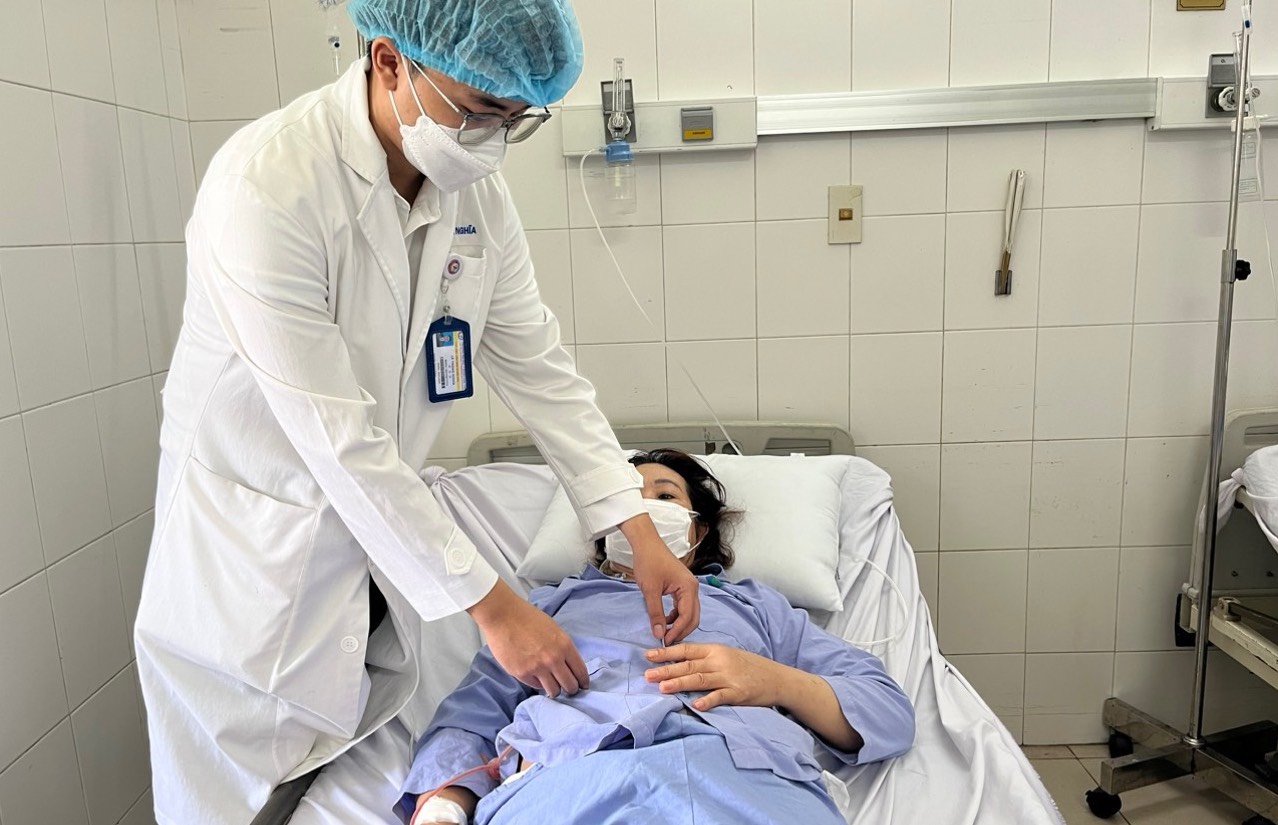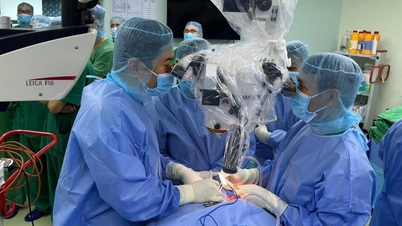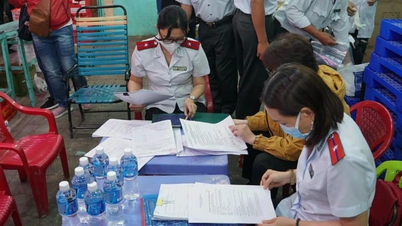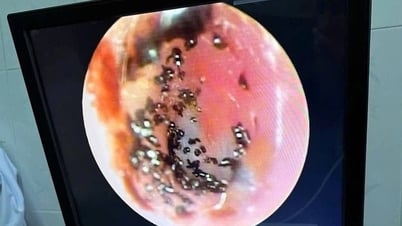On June 18, information from Can Tho Central General Hospital said that doctors had just coordinated to save the life of a patient in critical condition due to gastrointestinal bleeding from the small intestine.
Previously, female patient NTL (60 years old, residing in Phu Tan District, Ca Mau) was transferred to the hospital in a state of drowsiness, with a lot of blood in the stool, pale skin and mucous membranes, low blood pressure, rapid, weak pulse, respiratory failure, and metabolic acidosis. The patient had an endoscopy of the stomach, duodenum, and colon at a previous hospital but no lesions were detected.

The patient's condition improved after surgery.
Immediately after admission, the Emergency Department performed the internal red alert procedure. The patient was given emergency treatment, intravenous fluids, blood transfusion, emergency fresh frozen plasma transfusion, medical resuscitation, endotracheal intubation, mechanical ventilation, anti-acidity, and invasive arterial blood pressure catheter placement.
The results of the abdominal computed tomography with pre-contrast showed contrast extravasation in the wall of the left small bowel loop, without tumor or polyp. The patient was indicated for digital subtraction angiography and arterial embolization to treat bleeding of the viscera. However, the intervention could not be performed because no signs of extravasation were recorded during digital subtraction angiography.
After that, the doctors performed intensive resuscitation, adjusted the blood clotting disorder and decided to perform surgery on the patient's abdomen in the midline 15 cm above the navel. During the surgery, the team recorded that the patient's abdomen had about 100 ml of fluid... The surgery was successful after 2 hours, during the emergency and surgery, the patient was prescribed 35 units of blood and blood products.
After surgery, the patient was transferred to the Intensive Care - Anti-Poison Department for monitoring and continued intensive medical resuscitation. Currently, the patient's health is stable, and the pink mucous membrane is being treated at the General Surgery Department.
Dr. Bo Kim Phuong, Head of the Department of Clinical Hematology and Gastroenterology, Can Tho Central General Hospital, informed: Lower gastrointestinal bleeding is caused by intestinal vascular malformations (from the duodenum to the ileum), common causes are intestinal vascular malformations, hemorrhagic inflammatory lesions, small intestinal polyps, small intestinal tumors... This type is often difficult to diagnose and treat because the small intestine is very long, averaging 6.5 m. In addition, small intestinal bleeding caused by intestinal vascular malformations is even rarer and more difficult to diagnose.

CT scan showing the location of the hemorrhage
Nowadays, with the development of small intestine endoscopy, many cases have been diagnosed and successfully treated by endoscopy. However, this is an invasive procedure, takes a lot of time, requires clean bowel preparation, and is not suitable in situations of massive bleeding or severe hypotension.
In addition, endovascular intervention in small bowel bleeding is still recommended by many experts as the first choice in diagnosis and treatment, especially in severe cases where major surgery is not appropriate. Surgery should be considered a life-saving method when endovascular intervention fails or the patient's condition is too severe to delay intervention.
According to Dr. Phuong, gastrointestinal bleeding due to small intestinal vascular malformations is a rare disease, with many challenges in diagnosis and treatment, requiring the coordination of many specialties with modern equipment and especially the professional capacity of doctors from many specialties.
Source: https://thanhnien.vn/cuu-song-ca-xuat-huyet-tieu-hoa-tu-ruot-non-nguy-kich-185240618183350552.htm



![[Photo] Prime Minister Pham Minh Chinh chairs conference on anti-smuggling, trade fraud, and counterfeit goods](https://vphoto.vietnam.vn/thumb/1200x675/vietnam/resource/IMAGE/2025/5/14/6cd67667e99e4248b7d4f587fd21e37c)





























































































Comment (0)